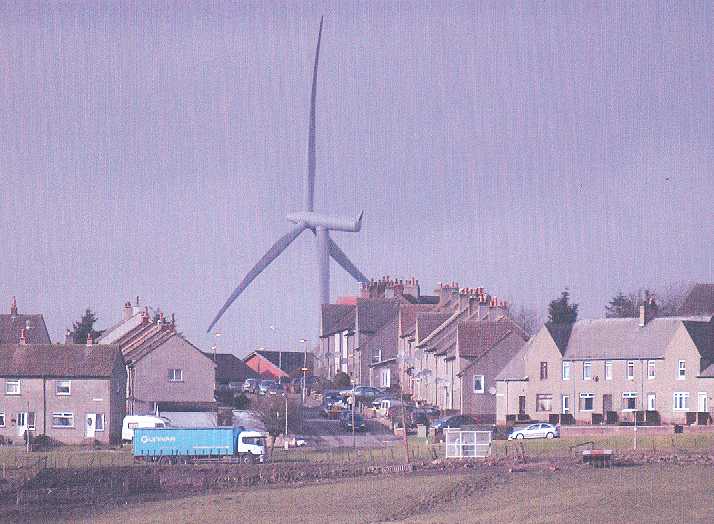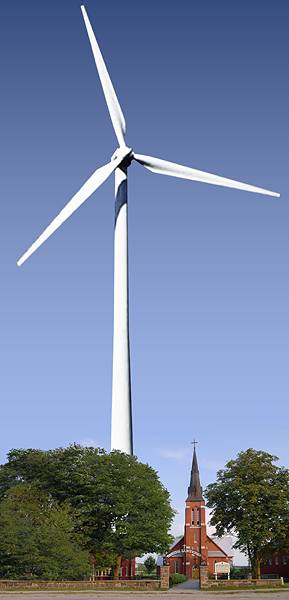| 1.600 metros como mínimo entre habitaciones y aerogeneradores |
(3457) |
| ASI LO PIDEN NATIONAL WIND WATCH Y OTROS ESPECIALISTAS DEL TEMA DEL RUIDO |
| Parques eólicos : las quejas de vecinos se multiplican, y el problema del ruido se convierte en un problema de mayor consideración alrededor del mundo. Molesta especialmente de noche, cuando los demás ruidos desaparecen. Insomnia y estress influyen en la salud de aquellos vecinos quienes tienen que vivir cerca de un parque eólico. Varias organizaciones piden una distancia mínima de 1.600 metros. |

ARTÍCULO ORIGINAL
Está en Inglés, lo siento.
NOISE COMPLAINTS ON RISE WITH NEW INDUSTRIAL WIND POWER PROJECTS.
National Wind Watch calls for minimum 1-mile setbacks
Press Release
Contact: Eric Rosenbloom, East Hardwick, Vermont, President David Roberson, Rowe, Massachusetts, Vice-President
Rowe, Mass., April 2, 2007 -- Noise created by commercial-scale wind turbines has become a major concern around the world as wind power development continues to proliferate. Although the industry claims that modern turbines are quieter -- even as they grow ever larger -- complaints are increasing from people who live near new projects.
While the wind itself may mask some of the noise under some atmospheric conditions, the deep unnatural thumping as the giant blades pass their supporting tower is particularly intrusive. Testimony from hundreds of turbine neighbors confirms this, most recently from Maine, Massachusetts, New York, Pennsylvania, Illinois, Wisconsin, Texas, Canada, the U.K., and New Zealand. Reports can be found at REPORTS and MORE REPORTS.
The noise is especially intrusive because wind energy facilities are often built in rural areas where the ambient sound level may be quite low, especially at night. On the logarithmic decibel (dB) scale, an increase of 10 dB is perceived as a doubling of the noise level. An increase of 6 dB is considered to be a serious community issue. Since a quiet night in the country is typically around 25 dB, the common claim by wind developers of 45 dB at the nearest home would be perceived as a noise four times louder than normal. And because it is intermittent and directional, those affected assert that one can never get used to it.
The disruption of sleep alone presents serious health and human rights issues.
The problem is worse than the industry admits. Frits van den Berg, a physicist at the University of Groningen in The Netherlands, studied noise levels around a German facility of 17 turbines. In a paper published in the November 2004 Journal of Sound and Vibration, he found that at night, because the surface air is often more still than the air at the height of the blades, the noise from the turbines is 15 to 18 dB higher than during the day and carries farther. He noted that residents 1.9 kilometers (6,200 feet or 1.2 miles) away expressed strong annoyance with noise from the facility.

The French National Academy of Medicine has called for a halt of all large-scale wind development within 1.5 kilometers of any residence, because the sounds emitted by the blades constitute a permanent risk for people exposed to them. The U.K. Noise Associationstudied the issue and agreed with the recommendation of a 1-mile setback.
In the U.S., the National Wind Coordinating Committee could not avoid the conclusion that "those affected by noise generated by wind turbines live within a few miles of a large wind power plant or within several thousand feet of a small plant or individual turbine. Although the noise at these distances is not great, it nevertheless is sufficient to be heard indoors and may be especially disturbing in the middle of the night when traffic and household sounds are diminished."
National Wind Watch calls on the commercial wind industry to respect the people who reside in targeted development regions, to honor their right to healthy lives and peaceful enjoyment of their homes, by adopting meaningful setbacks -- measured in miles, not in feet.

National Wind Watch information and contacts are available at National Wind Watch.
National Wind Watch is a nonprofit corporation that promotes knowledge and raises awareness of the negative environmental and social impacts of industrial wind energy development. Information, analysis, and other materials are available on its web site : National Wind Watch
National Wind Watch, Inc., P.O. Box 293, Rowe, MA 01367
------------------------------------------------------------------------------------------------------------
Artículos de Mark Duchamp sobre la cara oscura de los parques eólicos : Energía eólica - enlaces a los artículos de Mark Duchamp
| Insertado
por: Mark Duchamp (04/04/2007) |
| Fuente/Autor:
National Wind Watch, Inc. - comentario en Español de Mark Duchamp |
Valoración
Comentarios
|
